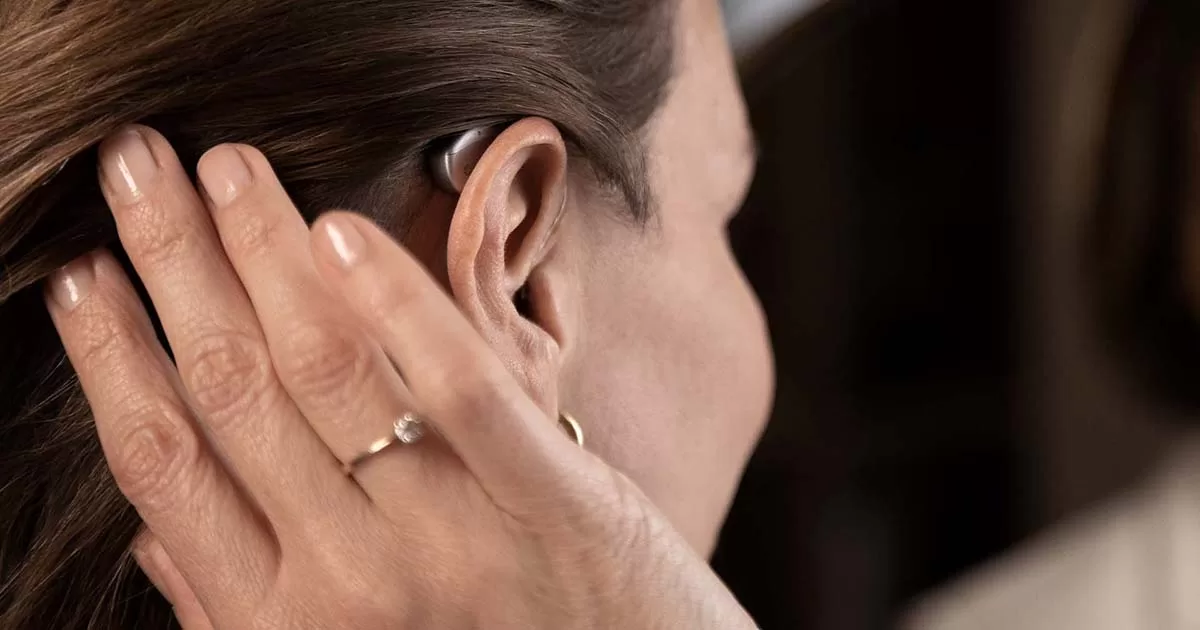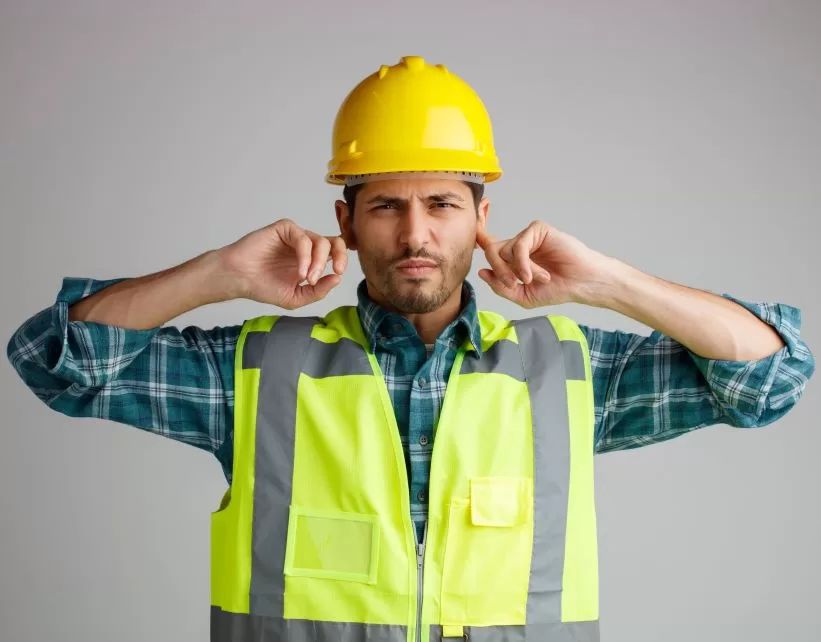Hearing loss affects one in six Australians and this number is expected to grow by 2050 due to the ever-aging population and our continual exposure to noise.
Although age-related hearing loss is the most common form there are many other causes that can attribute to hearing loss from medical to physical to genetic.
In this article, we will explain many of the different causes of hearing loss along with the different rehabilitation and treatment options available.
Content Navigation [hide]
What Causes Hearing Loss?
There are a large number of factors that have the ability to cause a hearing loss which may result in either a temporary or permanent outcome. Typically hearing loss is categorized into three specific categories referred to as Sensorineural, Conductive and Mixed Hearing Loss. Below we will discuss the potential causes for hearing loss associated with each of the categories.
Causes of Sensorineural hearing loss
Sensorineural hearing loss typically refers to a permanent type of hearing loss and occurs when there is damage to the inner ear and/or auditory nerve.
It can be caused by a range of different conditions that cause damage to the delicate structures of the inner ear or auditory nerve, which are responsible for converting sound into electrical signals that are transferred to the brain for processing. There are a number of causes that result in hearing loss which we have outlined below.
Common causes of Sensorineural Hearing Loss –
- Noise exposure
- Presbycusis (age-related hearing loss)
- Genetics
- Acoustic Neuroma
- Meniere’s disease
- Ototoxic medications
- Malformation of the inner ear and/or auditory nerve
- Congenital SNHL
- Disease or Virus
Medical conditions and diseases that can cause hearing loss –
- Meningitis
- Mumps
- Chickenpox
- Cytomegalovirus infection
- Syphilis
- Hypothyroidism
- Diabetes
- Acoustic Neuroma
Congenital sensorineural hearing loss –
Is a hearing loss that occurs during the pregnancy period, although very rare some factors that can cause this type of loss include:
- Maternal diabetes
- Prematurity
- Lack of oxygen
- Infectious diseases transferred from the mother to child (such as Rubella)
Medications/Chemicals that can cause hearing loss –
There are a large number of ‘ototoxic’ medications and chemicals that can cause permanent hearing loss. Many cancer chemotherapy drugs and treatments are ototoxic and have the ability to cause permanent hearing loss as well as certain anti-inflammatory and antibiotic medications. If you have questions about whether your medications or treatments may be ototoxic then it is best to speak with your doctor.
Causes of Conductive Hearing Loss
Conductive hearing loss occurs in the outer and/or middle ear system and causes the normal transfer of sound to be restricted into the inner ear. Although conductive loss can be permanent it is commonly referred to as a temporary loss as if the obstruction can be sufficiently corrected the transfer of sound can resume as normal.
- Otitis Media – Infection in the middle ear
- Otitis Externa – infection in the outer ear
- Eustachian Tube Dysfunction
- Cholesteatoma
- Foreign objects in the ear canal
- Impacted earwax
- Perforated eardrum
- Otosclerosis
- Tympanosclerosis
- Malformation of the outer and/or middle ear
Causes of Mixed hearing loss
Mixed hearing loss as the name suggests is a mixture of both Sensorineural and Conductive hearing loss. The Sensorineural component is typically permanent and the Conductive component is typically temporary. Causes of mixed hearing loss are typically a combination of the many causes mentioned above.
The Importance of Treating Hearing Loss:
Hearing loss is one of our most important senses, it enables us to communicate with others, learn tasks and socialize with friends and loved ones. When it becomes compromised it limits our ability to effectively communicate and socialize often leading to withdrawal from social situations which leads to mental conditions such as depression and increased anxiety.
Recent studies have also identified links between untreated hearing loss and the increased risk of cognitive conditions such as dementia. This is due to under-stimulation which causes atrophy to the auditory cortex with affects the sensitive areas of the brain surrounding this region.
One of the most important things that can be done to assist with hearing rehabilitation is to act early. Although we use our ears as part of the hearing process it is our brain that processes and interprets the information. When the input of sound is compromised to the brain especially over long periods of time it can have a detrimental effect on our ability to process and decipher the information received. The sooner the hearing loss is treated and the stimulation is restored to the brain the better the outcome of the individual.
Although hearing loss has the ability to be debilitating it doesn’t need to be. With today’s technological advancements there are many different products designed to ensure people with hearing loss can function normally in society without limitation. Below we discuss some of the rehabilitation options available.
Treatment Options for Hearing Loss:
Treatment or Rehabilitation options for hearing loss vary depending on the needs, level and type of your hearing loss. It is important to treat a hearing loss as soon as it is identified to ensure the overall health of the auditory system and the bigger picture – the overall health of the brain.
Independent Hearing specializes in hearing rehabilitation for all types of hearing loss. To book a FREE Hearing Assessment with one of our specialists contact (08) 8004 0077 today!
Hearing Aids
Hearing aids are small electronic devices that you can wear in or behind your ear. It amplifies sounds according to the patients’ damaged hearing frequencies making sounds louder and clearer in order for them to hear. When choosing a hearing aid it is important to know that there are many different types and styles available to suit all needs and budgets.
When seeking information on hearing aids the advice of an Independent provider is recommended to ensure you are given all the hearing aid options that are available in the market. Different styles of hearing include behind-the-ear (BTE), receiver-in-canal (RIC), custom hearing aids (ITC, ITE, CIC), invisible in the canal (IIC) and bone conduction hearing aids (BAHA).
Behind-the-ear (BTE) hearing aid
This style is one of the most common styles prescribed across the world. The versatility of these devices fit all types of hearing loss from mild to profound and come in many different shapes and sizes.
These devices are very reliable and typically lower maintenance than others given the hearing aid sits behind the ear and the sound is transferred through a tube into the ear canal.
Although one of the larger styles of hearing aids, there are many newer models that come in smaller sizes with slim tubing and can be very discreet.
Receiver-in-canal (RIC) hearing aid
Receiver in canal hearing aids also commonly referred to as RIC hearing aids sit behind the ear which is attached to a receiver that sits in the ear canal. RIC devices are the most popular devices sold today and worth considering for anyone who is in need of hearing assistance.
RICs are perfect for those who prefer a more discreet hearing aid. They’re smaller than other types of devices, and their thin case helps them blend seamlessly behind your ear with a large range of colour options to suit every individual.
If connectivity is a must then a RIC device is the option for you with many models providing direct Bluetooth connectivity to both iPhone and Android devices enabling individuals to stream phone calls, Zoom meetings, Music and Movies directly to your hearing aids. They also are readily available in rechargeable models removing the need for regular battery changes.
Custom hearing aids (ITC, ITE, CIC)
are custom moulded to fit specifically into the patient’s ear and come in a wide range of sizes and styles.
– In-the-Ear (ITE): The larger of the custom styles allows this style to have the most features of the custom style devices. Due to the larger size of the device, it allows for a larger battery size which increases the power output and battery life for this style of the device. Added features such as Tele-Coil, Program Buttons, and Volume Wheels can also be added and the latest models also now come in a rechargeable option.
– In-the-Canal (ITC): The ITC hearing aid is a smaller version of the ITE and boasts many of the same abilities. Given the reduction in size controls such as the volume wheel or program, buttons are typically not available as the reduced size removes the ability to add these features. For individuals looking for a more discreet option with a similar output to the ITE then this may be the option for you.
– Completely-in-Canal (CIC): The CIC hearing aid is the smaller version of the custom hearing aid range. This style is very discreet and is a popular version of the custom style of hearing aids.
Invisible-in-canal (IIC) hearing aids
If a discreet hearing aid is what you prefer then the IIC devices are one of the most discreet hearing aid styles available on the market. They are custom-fit to sit deep in the ear canal and are virtually invisible to see once inserted. The IIC device will suit mild to moderate hearing loss profiles and come in a wide range of models.
There are many advantages to the Invisible-in-Canal hearing aid. Firstly as the name suggests they are virtually invisible when situated correctly in the ear canal which for individuals looking for discretion is a big plus.
Another major benefit of this style of device is the sound quality. Fitted deep in the canal it allows for a more natural sound utilising the users own ear and canal to funnel sound directly into the hearing aid.
Bone conduction hearing aids (BAHA)
This type of hearing aid is typically used for people who have a permanent type of conductive hearing loss or for individuals who are unable to wear a conventional type of hearing aid. This device is typically fixed into place behind the ear (on the mastoid bone) and transfers the sound through the mastoid bone into the cochlea, bypassing the outer and middle ear.
Cochlear Implants
Cochlear implants are surgically implanted electronic devices that provide sound to people with profound hearing loss where the use of a conventional hearing aid is not sufficient. It works by implanting a device directly into the inner ear which is used to artificially transfer sound electronically into the cochlea.
Assistive Listening Devices
Assistive listening devices also referred to as ALD’s are devices used to enhance specific trouble areas that a patient may have in regards to their hearing loss. For example, if the telephone is a concern then they are assistive telephones that amplify the sounds much louder than normal in order for hearing impaired people hear well. Bluetooth headsets that stream audio from the TV to headphones are another type of assistive device.
Final Thoughts:
If you have never had a hearing test then now is the time. Even if you are not experiencing signs of hearing loss it is important to have a baseline test conducted in order to compare to future hearing assessments.
Interestingly many patients that have a hearing test are often surprised to find the level of damage to their hearing when tested. Hearing loss often only affects certain frequencies while others stay within the normal range so many individuals don’t realize they may have some hearing loss prior to testing.
Independent Hearing offers FREE Hearing Assessments. To book an appointment with one of our specialists contact us on (08) 8004 0077 .














